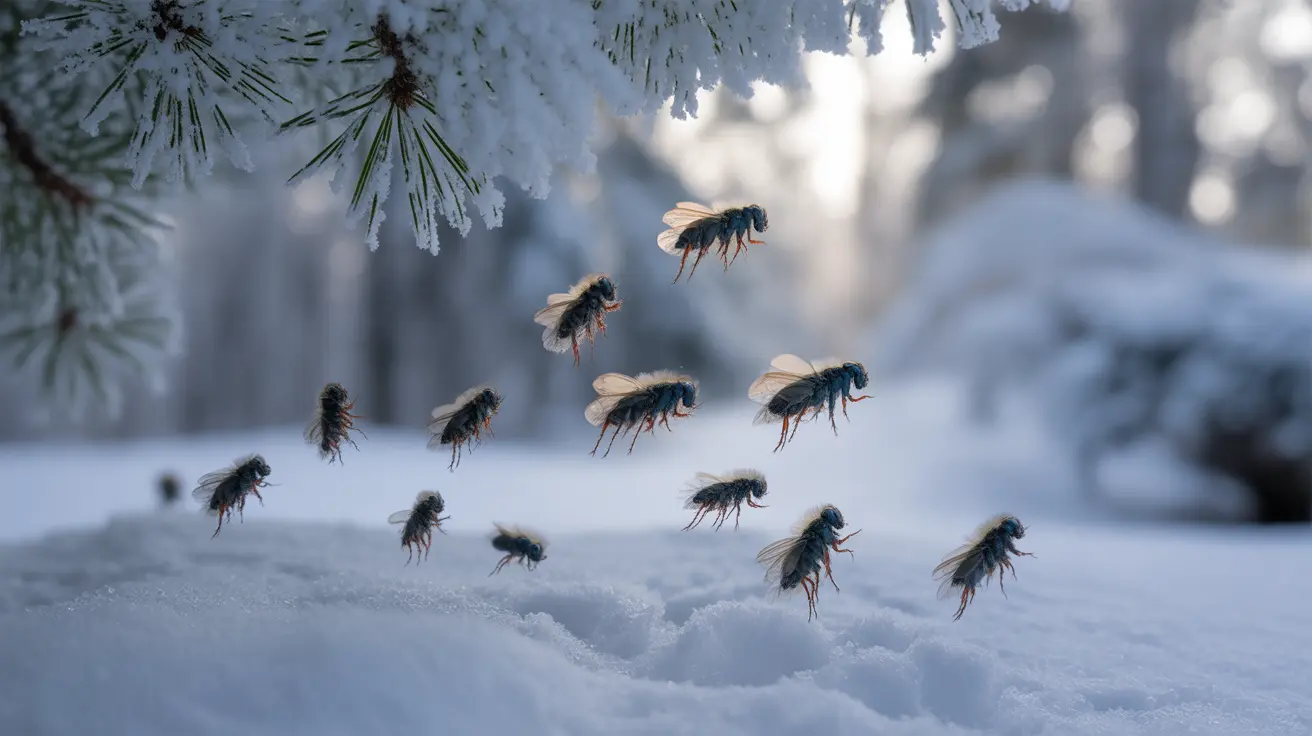Have you ever noticed tiny black insects jumping around in the snow or damp areas near your home? These mysterious creatures, often mistaken for regular fleas, are actually a fascinating species called springtails, commonly known as snow fleas. Understanding these unique insects can help alleviate concerns about their presence and shed light on their important role in our ecosystem.
Despite their nickname and appearance, snow fleas aren't actually fleas at all. They're a distinct type of arthropod that belongs to a different biological classification. Let's explore what these creatures are, their behavior, and whether they pose any risks to humans or pets.
Identifying Snow Fleas vs. True Fleas
Snow fleas (springtails) and true fleas have several distinguishing characteristics that make them easy to tell apart:
- Snow fleas are typically dark blue-black or grayish in color
- They measure about 1-2 millimeters in length
- They possess a unique jumping apparatus called a furcula
- Unlike true fleas, they don't bite or feed on blood
- They're most visible against snow or light-colored surfaces
Habitat and Behavior
These tiny creatures are typically found in:
- Moist soil and leaf litter
- Around tree bases and plant roots
- In melting snow during winter months
- Damp basements or bathrooms
- Garden areas with high organic matter
Snow fleas are most active during winter thaws and early spring, when they come to the surface in search of food and better living conditions. Their ability to remain active in cold temperatures is due to a special protein that acts as a natural antifreeze in their bodies.
Environmental Benefits and Impact
Far from being pests, snow fleas play several vital roles in the ecosystem:
- Breaking down organic matter in soil
- Contributing to nutrient cycling
- Improving soil structure
- Indicating healthy soil conditions
- Supporting plant growth through decomposition
Managing Snow Fleas Indoors
While snow fleas don't cause damage or pose health risks, some people prefer to keep them out of their homes. Here are effective prevention methods:
- Reduce moisture levels in basements and crawl spaces
- Seal entry points around windows and doors
- Fix leaky pipes and improve ventilation
- Remove damp organic matter near foundation walls
- Use dehumidifiers in problem areas
Frequently Asked Questions
What are tiny black fleas and how can I tell if they are snow fleas or true fleas?
Snow fleas are actually springtails, not true fleas. They're identified by their tiny size (1-2mm), dark blue-black color, and their distinctive jumping motion using a tail-like appendage called a furcula. Unlike true fleas, they don't bite or parasitize animals.
Do tiny black snow fleas bite or pose any health risks to humans and pets?
No, snow fleas don't bite humans or pets and pose no health risks. They're completely harmless and feed exclusively on decaying organic matter, algae, and fungi in the soil.
Why do I see small black jumping insects on snow and in damp areas around my home?
Snow fleas become visible on snow and in damp areas because they're seeking food and moisture. Their dark color makes them especially noticeable against white snow, and they're attracted to humid environments where they can find decomposing organic matter to eat.
How can I get rid of snow fleas indoors and prevent them from coming inside?
To control snow fleas indoors, focus on reducing moisture levels, sealing entry points, and improving ventilation. Using dehumidifiers and fixing water leaks can make your home less attractive to these moisture-loving creatures.
What role do snow fleas play in the environment and are they harmful to the soil or plants?
Snow fleas are beneficial to the environment. They help decompose organic matter, cycle nutrients in the soil, and contribute to overall soil health. Far from being harmful, they're actually indicators of a healthy ecosystem and can benefit plant growth through their decomposition activities.




